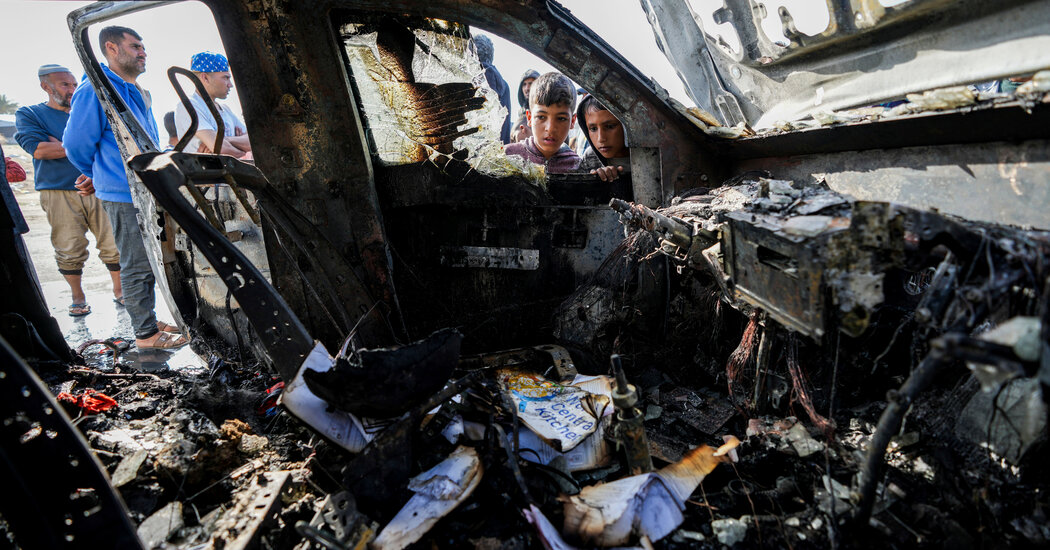Gaza has become the most dangerous place in the world for aid workers, the United Nations said on Monday.
At least 250 aid workers have been killed since the war there began on Oct. 7, the United Nations has said, and on Monday the U.N. said that nearly 200 of them worked for UNRWA, its main agency for Palestinian refugees, further hindering the work of organizations already struggling to deliver aid in the enclave.
Aid groups have said that most of the dangers come from Israeli bombardment and airstrikes, which have devastated Gaza over eight months of war, killing more than 37,000 Gazans, according to local health authorities. Israel launched its retaliatory campaign in Gaza after the Hamas-led assault in southern Israel killed about 1,200 people and abducted about 240, according to Israeli officials.
The peril faced by humanitarian workers in Gaza has interrupted or obstructed the distribution of desperately needed aid in a place where, aid groups have warned, hundreds of thousands of people are facing famine conditions.
It was unclear how many aid workers have been killed by Israel’s offensive while delivering humanitarian aid, though at least some of the 193 UNRWA employees were, said Inas Hamdan, UNRWA’s acting public information officer for Gaza.
“Airstrikes or bombardment never stop,” Ms. Hamdan said. She added: “In order for humanitarian response to be effective, stable conditions are needed.”
The International Crisis Group, a think tank, said in early May that the Aid Worker Security Database — an open source for tracking attacks on aid workers globally — had documented 234 deaths stemming from 308 incidents targeting aid workers in Gaza. That is the most incidents recorded in a single conflict year since 1997, the group said.
But beyond Israel’s bombardment, the crisis group said, the rate of aid worker deaths in Gaza also stemmed from an ineffectual system to ensure the safe movement of aid workers by communicating and coordinating with the Israeli military.
Questions to COGAT, the arm of the Israeli military that implements government policy in the occupied West Bank and Gaza, regarding the system, known as deconfliction, were not immediately returned.
Dr. Tanya Haj-Hassan, a pediatric intensive care physician whose work with aid groups has taken her to many conflict zones, spent two weeks in late March volunteering at Al Aqsa Hospital in Deir El Balah for Medical Aid for Palestine, mostly treating airstrike victims. She said deconfliction involved notifying warring parties that aid workers were coming in and where they were going, so that the warring sides could avoid targeting them.
In Gaza, she said, the deconfliction process was “a farce” and aid workers have been struck when there were no military targets nearby.
“Nothing compares to what I experienced in Gaza, the drone and the actual bombing was constant, so you always felt like there was a possibility that you or the building you were in could be hit at any moment,” Dr. Haj-Hassan said.
She added: “We don’t have any safety guarantees.”
In April seven World Central Kitchen workers were killed in an Israeli airstrike, even after the aid group said it had coordinated the movements of its convoy with the Israeli military.
The military later said in a statement that the “grave mistake” stemmed from a string of errors, including “a mistaken identification, errors in decision-making and an attack contrary to the Standard Operating Procedures.”
Israel’s own account of the strike raised questions about the military’s ability to identify civilians and its procedures for protecting them, as well as whether it has been complying with international law, legal experts told The New York Times after the strike.

